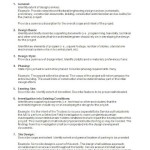Essential Considerations for Painting the Interior of Your Home
Transforming the interior of your home with a fresh coat of paint is an exciting and rewarding project. However, it's crucial to carefully consider various aspects to ensure a successful and satisfactory outcome. Here are some essential factors to keep in mind when painting the inside of your house:
1. Preparation:
Meticulous preparation is paramount. Remove all furniture and décor from the room, including curtains and fixtures. Protect floors, windows, and other surfaces with drop cloths and tape. Clean the walls thoroughly to remove dirt, grime, and any existing peeling paint. Repair any cracks or holes using appropriate filler and allow it to dry completely before sanding.
2. Color Selection:
Choosing the right color palette is pivotal. Consider the size, shape, and natural light of the room. Light colors can make a space feel larger and brighter, while darker shades create a more intimate atmosphere. Explore online color palettes, consult with experts, or sample paints on the walls to determine the perfect hues.
3. Paint Type:
Selecting the appropriate paint type is essential. Flat paint conceals imperfections but may require multiple coats. Eggshell and satin paints offer a balance between durability and sheen, suitable for most interior surfaces. Semi-gloss and high-gloss paints create a durable and reflective finish, ideal for kitchens, bathrooms, and trim.
4. Priming:
Applying a coat of primer before painting enhances paint adhesion, prevents stains, and ensures an even finish. Use a suitable primer for the type of paint and surface you're working with. Allow the primer to dry completely before applying the paint.
5. Painting Technique:
Use high-quality brushes and rollers to achieve a professional-looking finish. Apply thin, even coats, allowing each coat to dry thoroughly before applying the next. Work in sections, starting from the top of the wall and working your way down. Use a light, gentle touch and avoid overworking the paint.
6. Drying Time:
Allow sufficient drying time between coats and before replacing furniture and décor. Depending on the paint type, temperature, and humidity, drying times can vary. Follow the manufacturer's instructions and allow adequate time for the paint to cure properly.
7. Cleanup:
Immediately after painting, clean all brushes, rollers, and trays with the appropriate cleaning agent. Remove tape and drop cloths and dispose of them properly. Ventilate the room thoroughly to eliminate any lingering paint fumes.
By following these essential considerations, you can ensure that your interior painting project is a success. With careful planning, preparation, and execution, you can transform your living spaces into beautiful and inviting havens.

How Much Does Interior House Painting Cost In 2024 Forbes Home

4 Common Interior Painting Myths Debunked

5 Interior House Painting Tips The Paint People

Interior Painting Process Residential Casas Quarto

Four Steps For Interior House Painting Decker Service Professionals

Diy Interior Wall Painting Tips Techniques With S Family Handyman

How Much Does Interior Painting Cost Castle Complements

Interior Painters House Painting Services Certapro
How To Choose An Interior House Painter Picone Home Painting Paperhanging
Interior Painting Tips For Your Home And House Tucson








